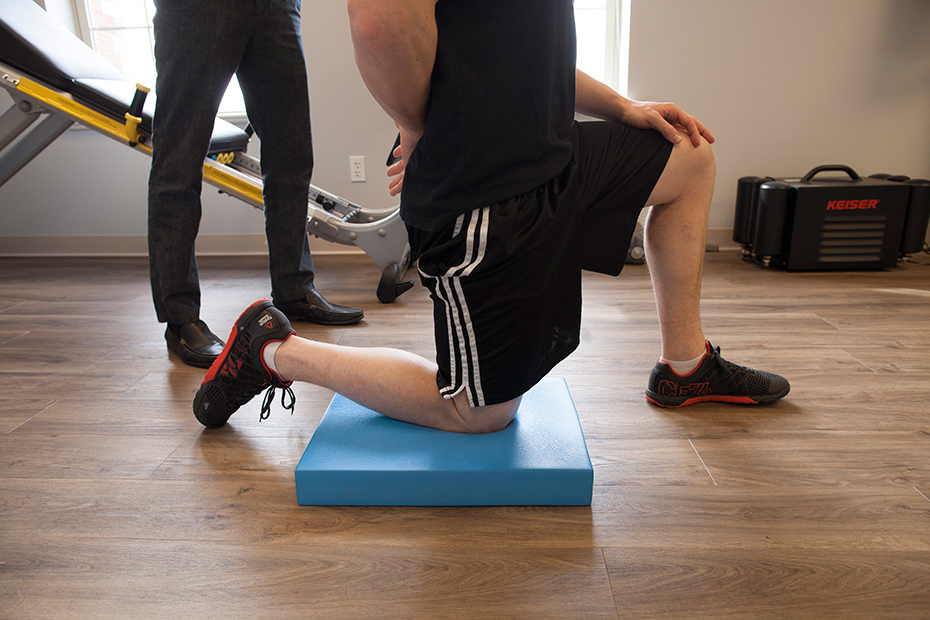Stretching
Stretching is a common activity employed by millions of individuals on a daily basis. Most think about stretching specifically for muscles, but it can be used for other soft tissues as well. Stretching is used to elongate the targeted tissue. Specifically, its purpose is to take the tissue into a state of deformation that will stay elongated after the stretch is released. Think of it like an elastic, if you just pull it apart gently, it will elongate, but it will rebound to its normal length when released. If you pull a little more to the point where the rubber of the elastic stretches, it will rebound, but will now be lengthened. Stretching also affects nerve endings (golgi tendon organs, and muscle spindle fibers), which can help to reduce pain, and the sensation of tightness within the tissue. Stretching muscles also has a benefit to the joints they cross. If a muscle has shortened over a joint, it will create increased joint compression and possibly alter the way the joint rubs together. This can lead to uneven wearing of the joint surfaces and possible degeneration.
 A common mistake with stretching is overstretching, and stretching tissue that has increased tone. There are instances when too much joint mobility can be the source of symptoms. If we continue to stretch/overstretch muscles around a joint that has too much mobility, these muscles will not be able to assist in stabilizing the joint. Increased tone (tension) within a muscle, can often indicate dysfunction in a nearby joint. The brain has sensed an issue, and signaled the surrounding muscle(s) to reduce movement of the joint. Chronic tone within a muscle can lead to pain and stiffness, however just stretching the muscle without addressing the joint dysfunction will not alleviate the problem. Our skilled clinicians will assess both muscle length and joint mobility to determine what, if any stretches are appropriate. If we feel stretches will help, we will take the time to teach you the correct and safe way to stretch.
A common mistake with stretching is overstretching, and stretching tissue that has increased tone. There are instances when too much joint mobility can be the source of symptoms. If we continue to stretch/overstretch muscles around a joint that has too much mobility, these muscles will not be able to assist in stabilizing the joint. Increased tone (tension) within a muscle, can often indicate dysfunction in a nearby joint. The brain has sensed an issue, and signaled the surrounding muscle(s) to reduce movement of the joint. Chronic tone within a muscle can lead to pain and stiffness, however just stretching the muscle without addressing the joint dysfunction will not alleviate the problem. Our skilled clinicians will assess both muscle length and joint mobility to determine what, if any stretches are appropriate. If we feel stretches will help, we will take the time to teach you the correct and safe way to stretch.